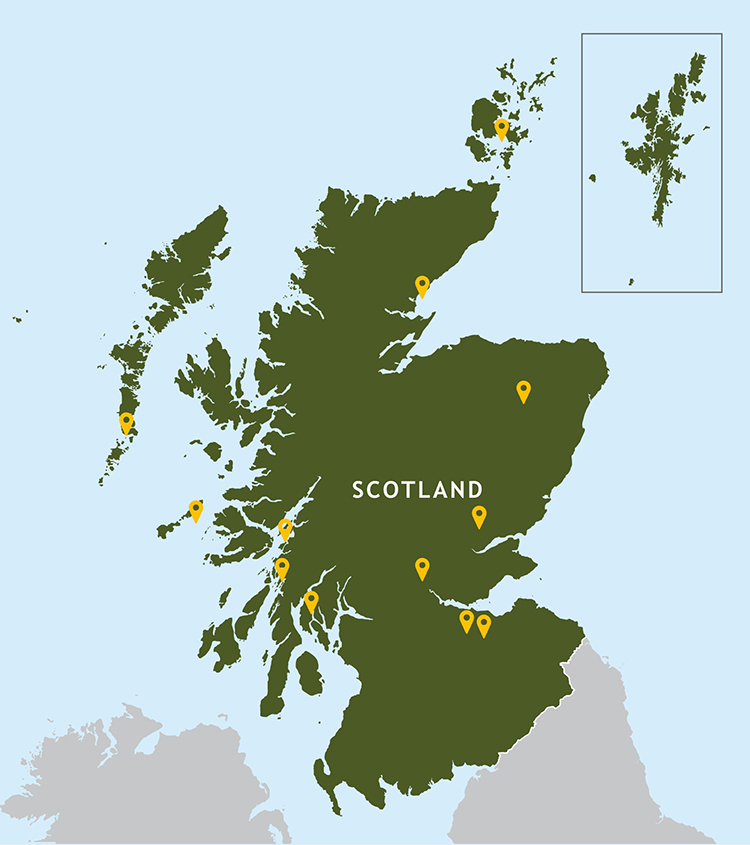Bere – the barley landrace. Exploring its potential with growers. Forming a Bere network. Visiting sites in July 2023. Shared expertise and experience.
By Lawrie Brown
An exciting new initiative involving volunteer growers across Scotland is using a tricot participatory selection approach [1] with the purpose of understanding and selecting the best Bere varieties for different production systems and locations. We are building a growing network of interested growers, currently 16 in total, who were sent starter packs early in the spring. Each participant received seed for 3 barley types, 2 Beres (with different origins) and 1 control (a modern cultivar) which have been sown this season and observations, samples and measurements are being collected.
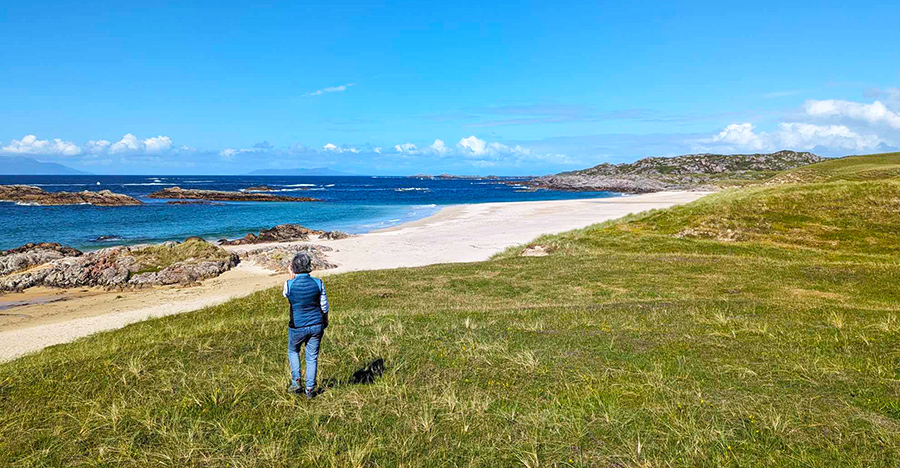
Edinburgh to Orkney| Hebrides to Aberdeen
In June, we had the tough job of visiting as many of the participants as possible. This involved a road trip across Scotland visiting a range of sites from Edinburgh and Aberdeen to Stirling, Argyll, Oban and the Isles of Coll, Lismore, South Uist and Orkney. This was a fascinating trip as we learned of the various personal motivations and interests for growing Bere barley from bread making to distilling and heritage conservation to feeding cattle. We met some really interesting people along the way who opened their doors to us and it was great to see small pockets of Bere being reintroduced to sites around Scotland.
The trial sites this year were small (usually plots of 2 x 6 m) as we had a restricted amounts of seed for distribution. However, next year we will be able to supply larger quantities for larger trial areas and more volunteer participants. Growers were free to apply whatever treatments they wished with some applying seaweed and/or manure as fertiliser while others trialled different tillage treatments. Most were grown without any weed control.
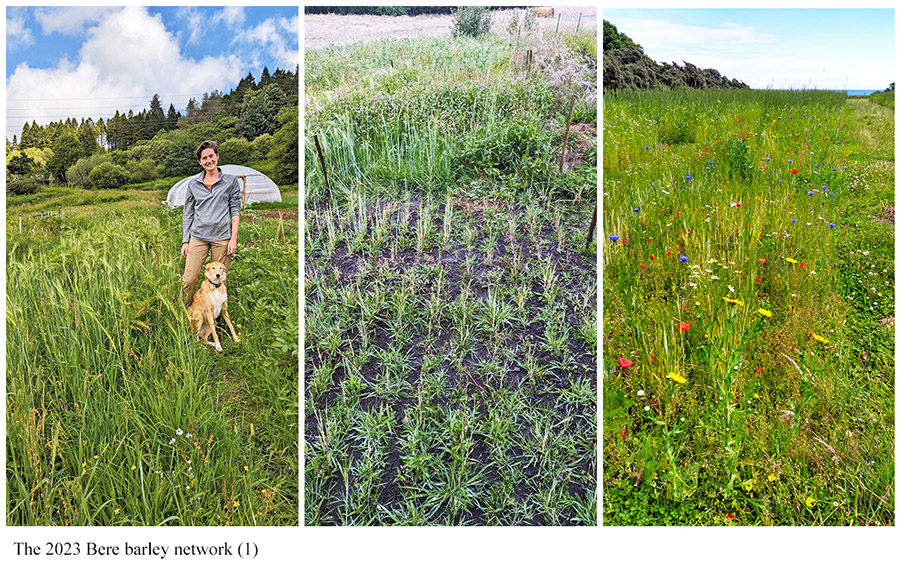
Shared experience | sharing knowledge
We are looking forward to collating all the data at the end of the season so we can see if specific beres prefer particular environments or treatments and the results will be shared with all growers through online groups and/or face-to-face workshops.
By working together and sharing experiences and information we hope we can all learn something new about the opportunities this ancient grain, Bere barley, can offer Scottish growers.
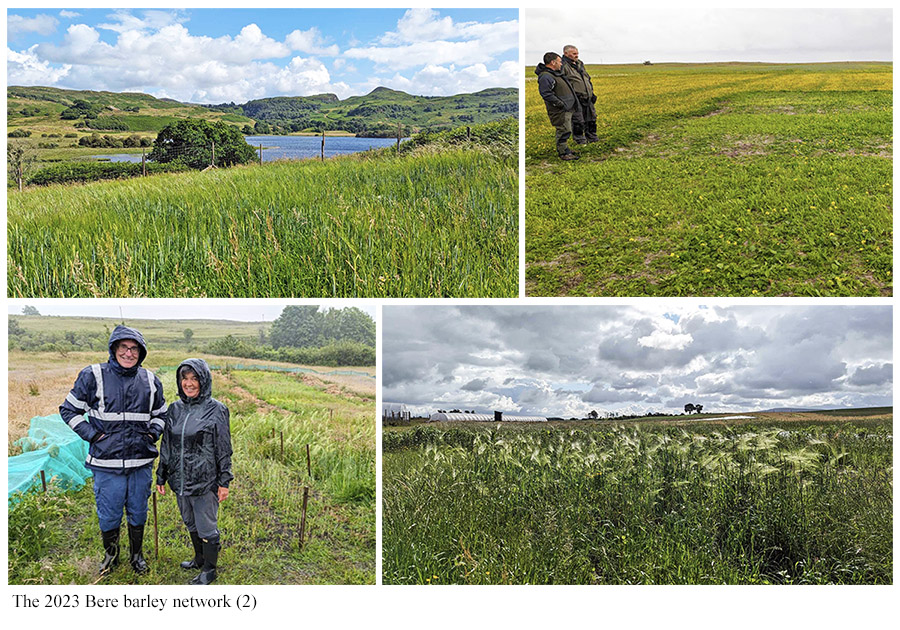
Join the Bere net?
If you would like to get involved in next year’s trials and join the network or find out more, feel free to contact me on lawrie.brown@hutton.ac.uk.
Lawrie works at the James Hutton Institute as a Research Scientist in the Plant Soil Interactions group of Ecological Sciences. Lawrie’s colleagues Molly Brown and Tim George were also involved in visiting the disperse and remote locations around Scotland.
References | sources | links

[1] ‘Tricot’ is short for Triadic comparison of technology options – “a research methodology that helps farmers to identify the most suitable technologies for the local conditions of their farm .… engages farmers as ‘farmer researchers’ in the testing or validation of new crop varieties and other promising technologies”. To find out more about the Tricot approach, visit the Alliance Bioversity & CIAT site at Tricot Aproach. Guide for large-scale participatory experiments. The 2020 report by van Etten and co-authors can be downloaded there. The Alliance’s wider aims in climate change, biodiversity loss, environmental degradation and malnutrition an be viewed at their home page.
[2] For more about bere on this web site: Bere barley at the Living Field gives a introduction to the plant and crop . Bere country shows areas grown with bere and barley in the first crop census in Scotland, 1854. Bere in Lawson’s Synopsis for the different forms of bere and other old barley varieties trialled by the Lawsons (seedsmen) near Edinburgh in the 1800s. For links to all this web site’s articles on bere, including recipes, see Bere line – rhymes with hairline.
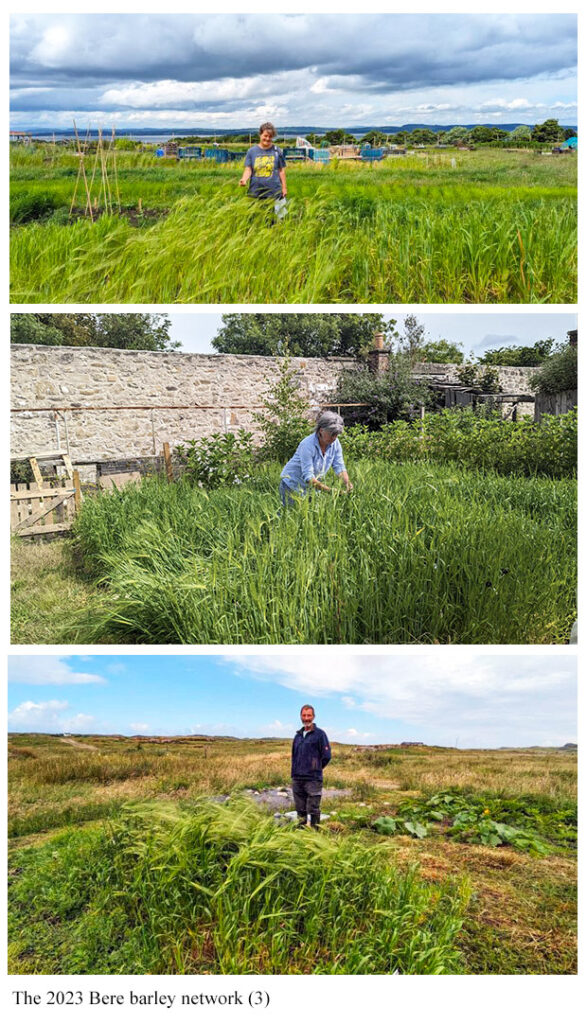
Ed: thanks to Lawrie for introducing the Bere net – pleased to hear that the article has helped to recruit more growers (11 Oct 2023)

